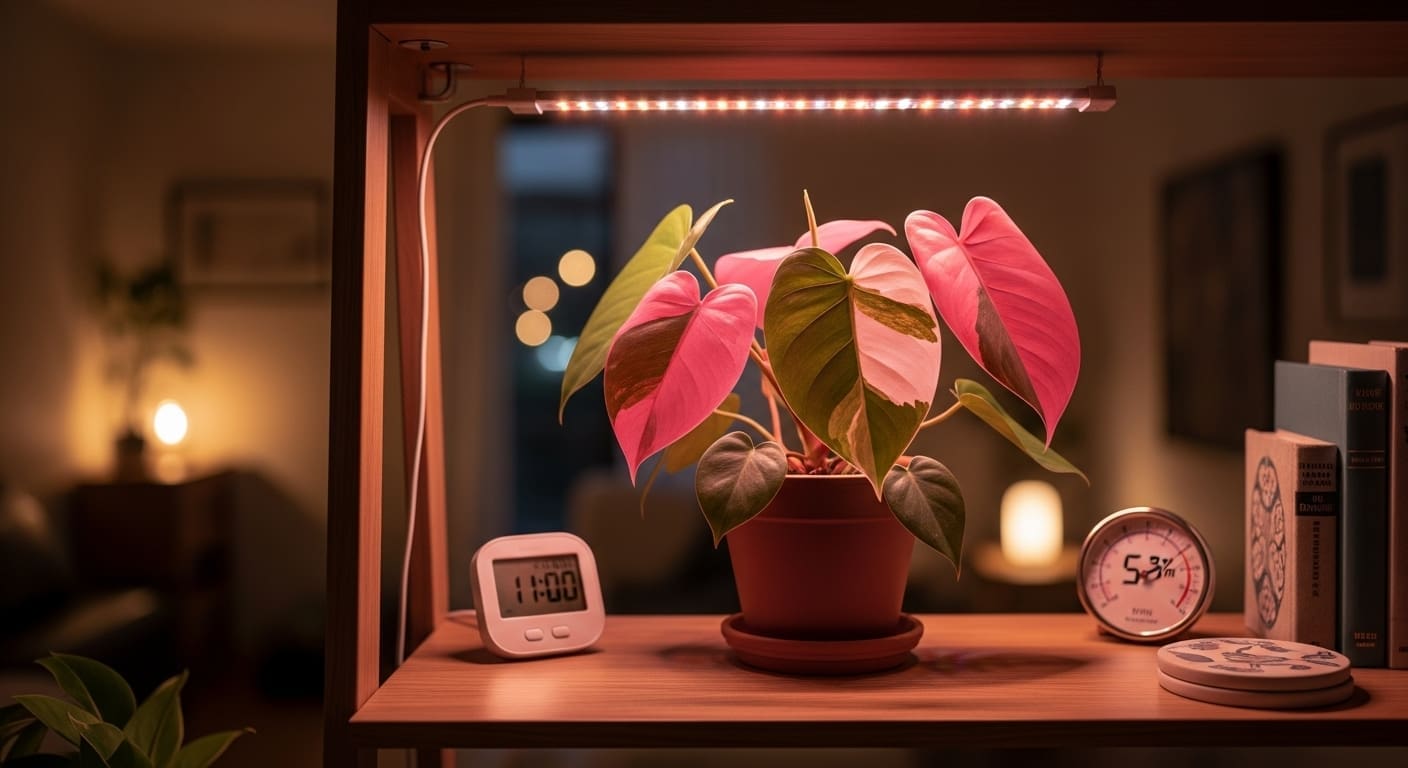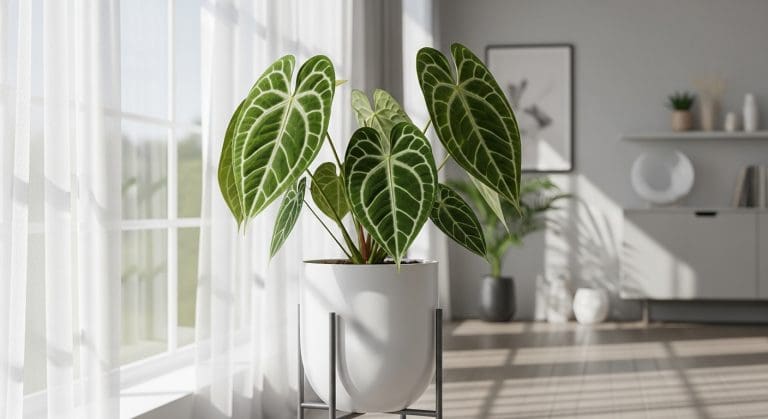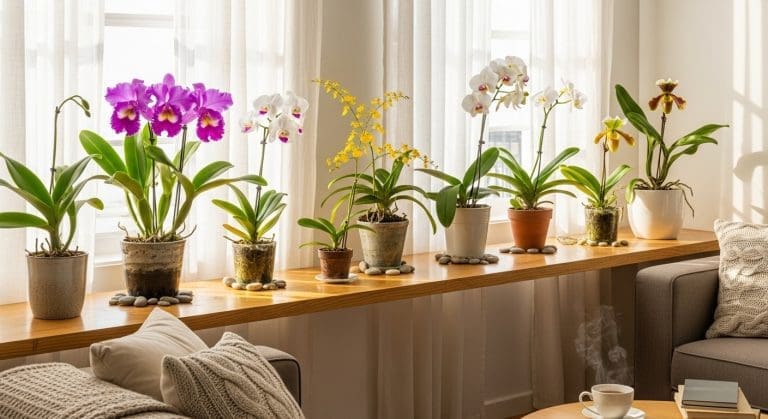If you’ve watched your Pink Princess slide from bubble-gum patches to mostly green, you’re not imagining it. Light consistency is the whole game. Get the numbers right and those blush tiles come back with calm, steady growth.
“I once blamed fertilizer, then humidity, then the pot. It was the light curve all along—too bright for a few hours, then not enough for days.”
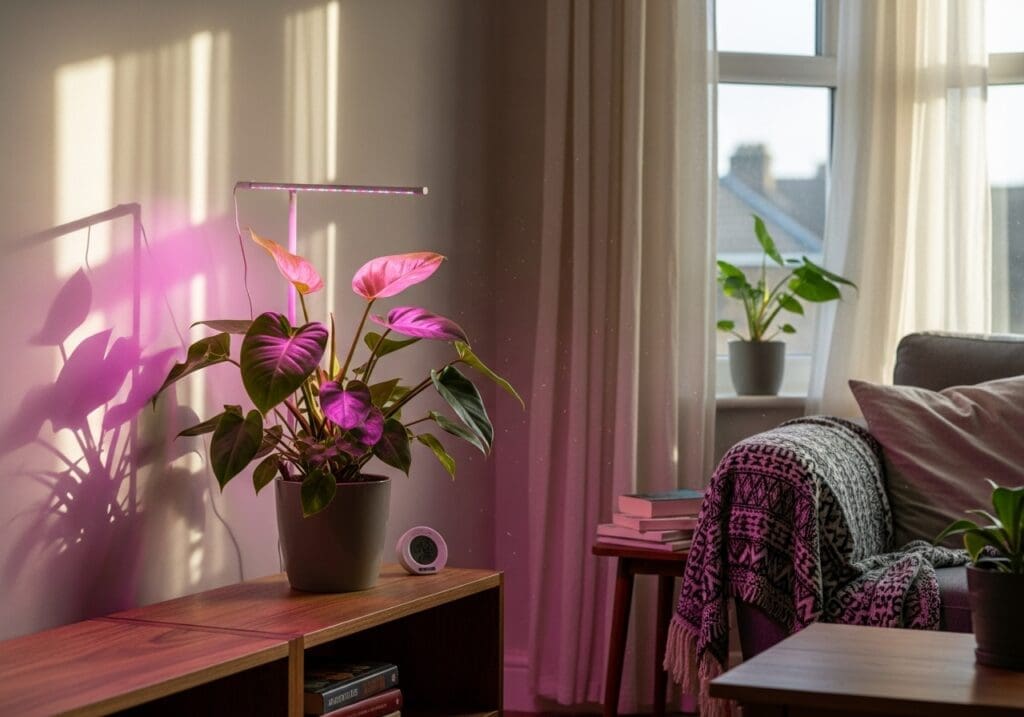
Quick answer: targets that keep the pink
For stable variegation, aim for PPFD 120–200 µmol·m⁻²·s⁻¹ at leaf level for 10–12 hours daily, giving a DLI of roughly 4–9 mol·m⁻²·day⁻¹. Keep that curve consistent—not spikes of noon sun followed by dull days. Place the plant 10–18 inches (25–45 cm) below a 20–40 W LED grow bar, or 1–2 feet back from a bright east/south-east window with a sheer curtain.
Will stronger light push more pink? Sometimes. But too much PPFD bleaches the pink to tan/cream, and too little makes new leaves mostly green. The sweet spot sits right in the middle—and holds steady.
A quick translation of the jargon
PPFD is the light intensity that actually reaches the leaf (measured in µmol·m⁻²·s⁻¹). Think of it as “how bright is it right now on the leaf?”.
DLI is the total daily light the plant receives (mol·m⁻²·day⁻¹). A steady DLI matters more than random bursts.
Indoor collectors in London flats or NYC apartments rarely hit outdoor numbers, so we work with controlled, repeatable light—grow bars, diffused windows, and consistent schedules.
The small-space setup that works (and why)
Most US/UK homes juggle radiators, short winter days, and windows that swing from gloomy to blinding. I keep my Pink Princess on a narrow shelving unit with a single bar light and a timer. It’s not fancy, but it’s predictable.
Place the plant off-center from the light so the pink sectors don’t take the full blast. Rotate ¼ turn each week to even exposure. If your window is your “grow light,” hang a sheer to level out harsh pulses—especially in July heatwaves or those bright, blue-sky winter days.
“On dark January mornings, I inch the light 2–3 cm closer and extend the timer by 30 minutes. When spring arrives, I back it off again.”

Step-by-step: dial PPFD & DLI without expensive gear
If you have a phone light meter app or basic PAR meter
- Set the bar height so PPFD reads ~150 µmol·m⁻²·s⁻¹ at the top leaves.
- Run 11–12 hours on a timer. That lands a DLI near 6–7 mol·m⁻²·day⁻¹, right in the stability zone.
If you don’t have a meter
- Start with the light 12–16 in (30–40 cm) above the canopy.
- Watch leaf color for 2–3 weeks. Faded tan/pale edges → raise the light or reduce hours. All-green new leaves → lower the light 2–3 in (5–8 cm) or add 60–90 minutes to the photoperiod.
- Keep the schedule identical daily with a plug-in timer.
(Rule of thumb: most 20–40 W linear grow bars hit ~120–200 PPFD at 12–18 in in a typical room; reflective walls/cabinets increase that.)
The numbers (so you can copy them)
- PPFD: 120–200 µmol·m⁻²·s⁻¹ measured at the newest leaf
- Photoperiod: 10–12 hours (use a timer)
- DLI target: 4–9 mol·m⁻²·day⁻¹
- Distance from bar: 10–18 in / 25–45 cm (adjust to keep color)
- Ambient: 65–77°F / 18–25°C, 45–65% RH (higher RH softens stress lines but isn’t essential)
Is your Pink Princess parked on a bookshelf? Will it survive winter cloud cover in Manchester or Seattle? Yes—if the timer never forgets.
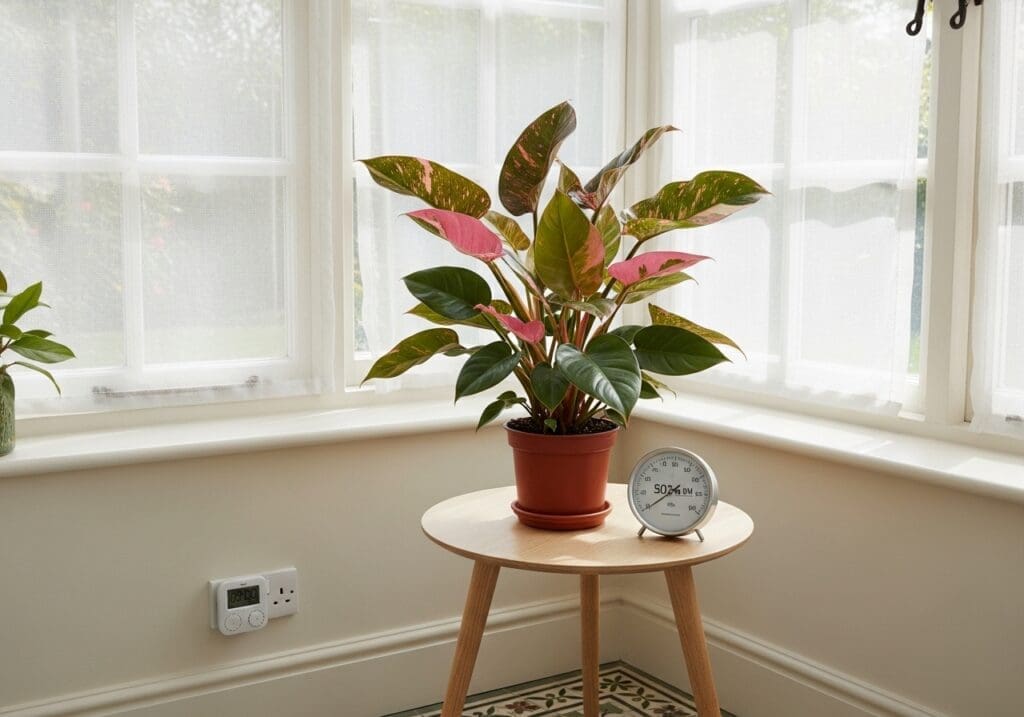
Care that supports variegation (beyond light)
Watering. Keep evenly moist but never soggy; let the top ½–1 inch of mix dry. Erratic droughts can force greener, faster leaves.
Nutrition. Feed lightly during active growth (¼–½ strength balanced fertilizer every 2–4 weeks). Overfeeding can push large, greener leaves.
Potting mix. Use a chunky aroid blend for oxygen around roots—bark, perlite, a dash of sphagnum. I mirror the ratios in our aroid soil mix to avoid compaction.
Placement. Radiators (US baseboard or UK rads) can crisp pink; give 8–12 in of space or a heat-shield tray.
Seasonal tweak. In winter, extend the photoperiod to 12 hours; in summer, shorten to 10–11 if you also get strong window light.
Common mistakes & quick fixes
- Chasing “more pink” with harsh sun. Bleaching = too much PPFD; raise the light or add a sheer.
- Weekend light binges. Consistency matters more than occasional bright windows; set a timer.
- All-green run of leaves. Nudge PPFD up (move light 2–3 in closer) or add 45–60 minutes to the photoperiod.
- Cabinet hotspots. Pink sectors scorch first; measure top-shelf PPFD and drop the plant one shelf lower.
- Overfeeding for color. Strong fertilizer drives fast green growth; keep it lean and regular.
(That’s your single list; keep the rest simple.)
What I actually do in my apartment
I keep my bar 15 in / 38 cm above the canopy, timer at 11 h in winter and 10.5 h in summer. I rotate the pot weekly and keep RH around 50–55% with a basic tray (Homebase in the UK, Lowe’s in the US works). When leaves emerge too green twice in a row, I close the gap by 2 in / 5 cm and reassess after the next leaf.
Expert insight
“Variegated foliage needs bright, filtered light—not direct, scorching rays—and steady conditions over time,” notes an RHS houseplant adviser, echoing indoor lighting guidance from the Royal Horticultural Society. That’s exactly why a fixed PPFD range and a timered photoperiod keep Pink Princess color stable without bleaching.
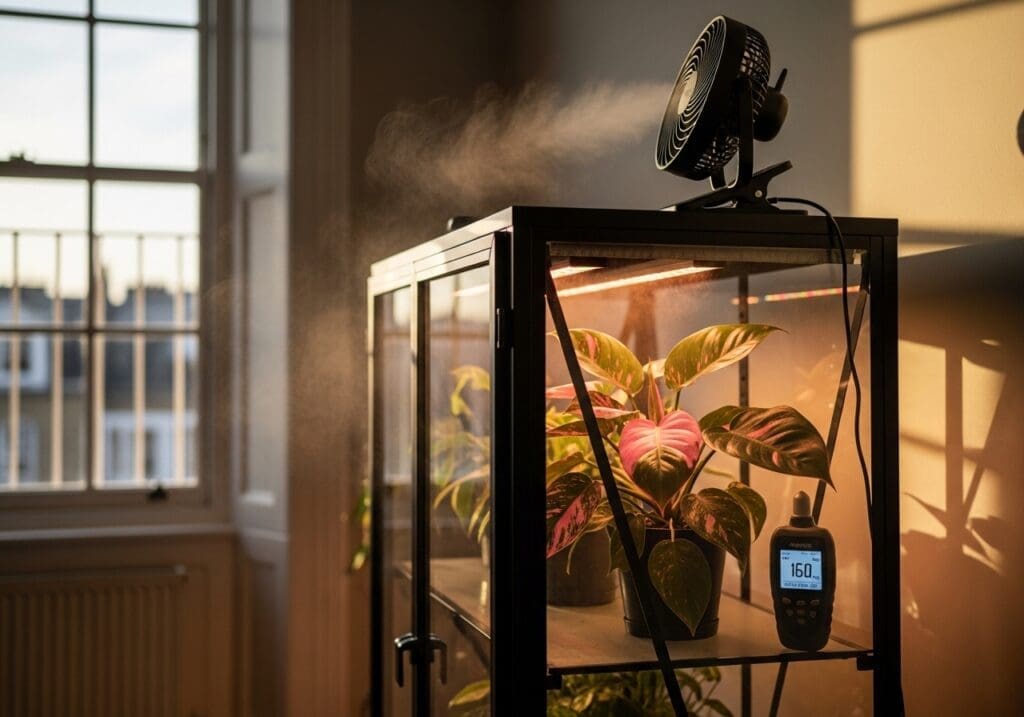
FAQs
What PPFD is too much for Pink Princess variegation?
Above 250–300 µmol·m⁻²·s⁻¹ for long periods often washes pink to tan. Keep within 120–200 and watch new leaves.
Can I rely on a bright window instead of a grow light?
Yes—use east or bright north-east with a sheer, and keep a 10–12 h day length. For winter, add a bar light to hold DLI steady. Our grow light distance guide shows easy placements.
Do fertilizer or pruning change variegation?
They influence growth rate and leaf size, but light consistency drives color stability. Keep nutrition modest and the photoperiod reliable.
A tiny decision guide (if X → try Y)
Mostly green new leaf? Add 45–60 minutes of light or move the bar 2–3 in closer.
Pale/bleached pink patches? Raise the light 3–4 in or reduce the day by 30–45 minutes.
Leggy internodes? Increase PPFD within the range (toward 180–200) rather than adding hours.
You don’t need a conservatory—just a repeatable light recipe. Keep PPFD 120–200, DLI 4–9, and let the timer do the heavy lifting. The pink stays, quietly and consistently.

RarePlantCare Editorial Team produces expert content on rare plants.
Our articles are AI-assisted and human-edited before publication.
We aim to provide practical, evidence-based guides for plant lovers worldwide.
Learn more about our Editorial Policy


